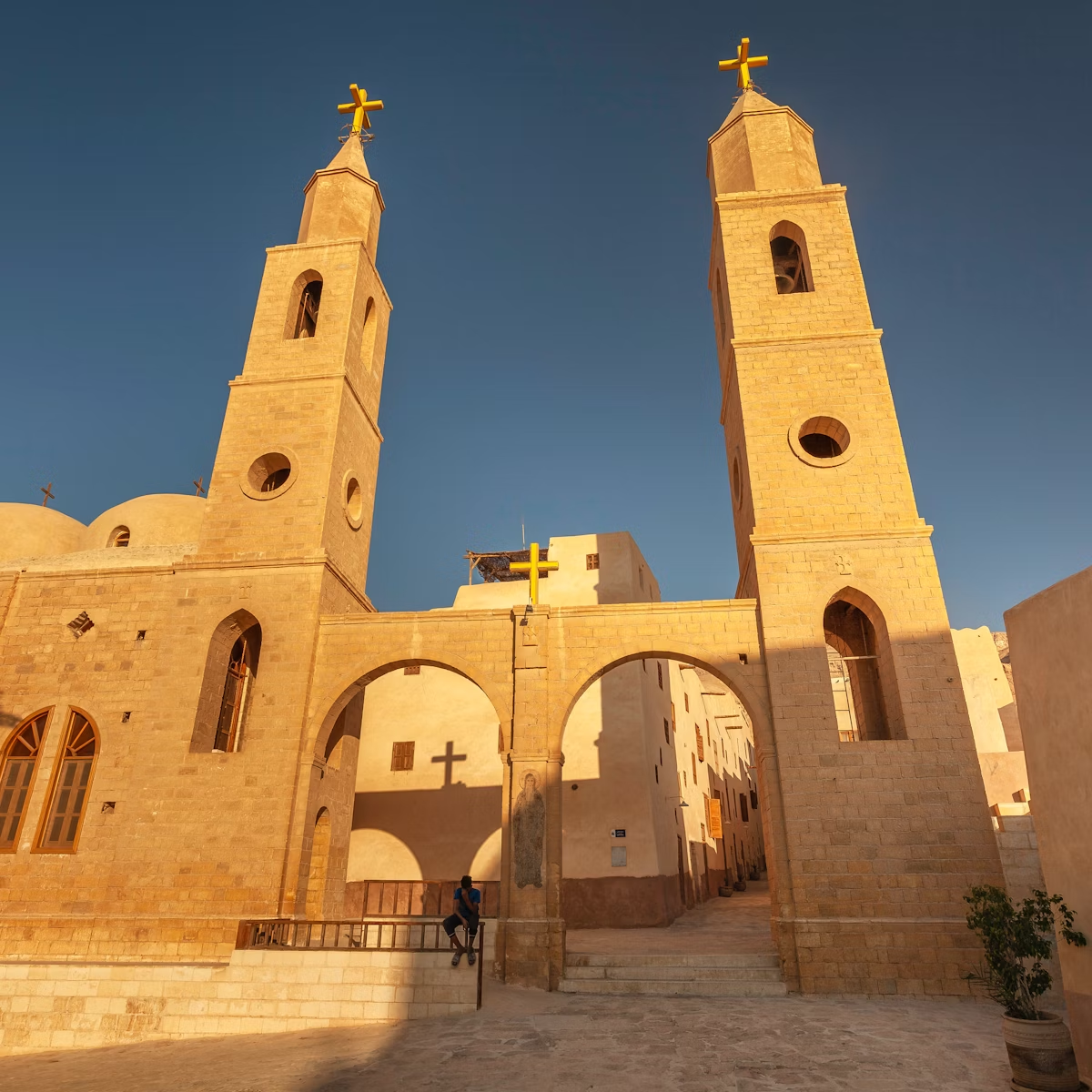Dating to the 4th century, the Monastery of St Paul began as a grouping of hermitages in the cliffs around the site where Paul had his cell. The complex's heart is the Church of St Paul, which was built in and around the cave where Paul lived. It’s cluttered with altars, candles, ostrich eggs (the symbol of the Resurrection) and murals representing saints and biblical stories. The fortress above the church was where the monks retreated during Bedouin raids.
St Paul’s monastery is quieter and much more low-key than nearby St Anthony’s, and is often bypassed in favour of its larger neighbour. But a visit is well worthwhile and gives a glimpse into the life of silence, prayer and asceticism that has flowered here in the Eastern Desert for almost two millennia. Visitors are welcome and can wander freely around the monastery but taking a guided tour with an English-speaking monk will allow you to access many of the locked areas.
Paul was born into a wealthy family in Alexandria in the mid-3rd century and originally fled to the Eastern Desert to escape Roman persecution. He lived alone in a cave here for more than 90 years, finding bodily sustenance in a nearby spring and palm tree. According to tradition, in AD 343 the then-90-year-old Anthony had a vision of Paul's death and made a difficult trek through the mountains to visit Paul, and then to bury him.
The monastery is open daily throughout the year except during Advent and Lent, at which time it can only be visited on Friday, Saturday and Sunday. During Holy Week it's closed completely to visitors. For enquiries or to confirm visiting times, contact the monastery headquarters, located off Clot Bey, south of Midan Ramses in Cairo.


